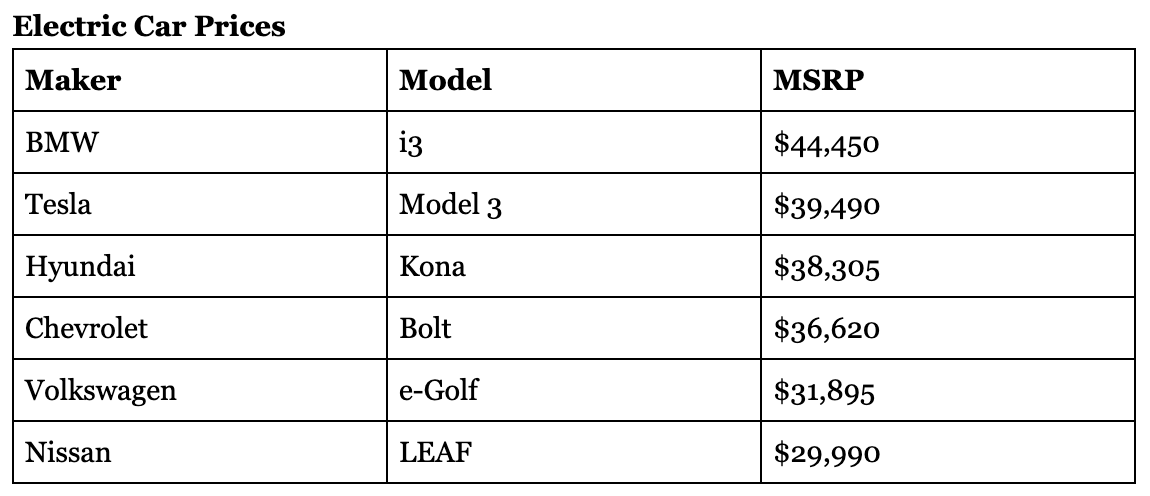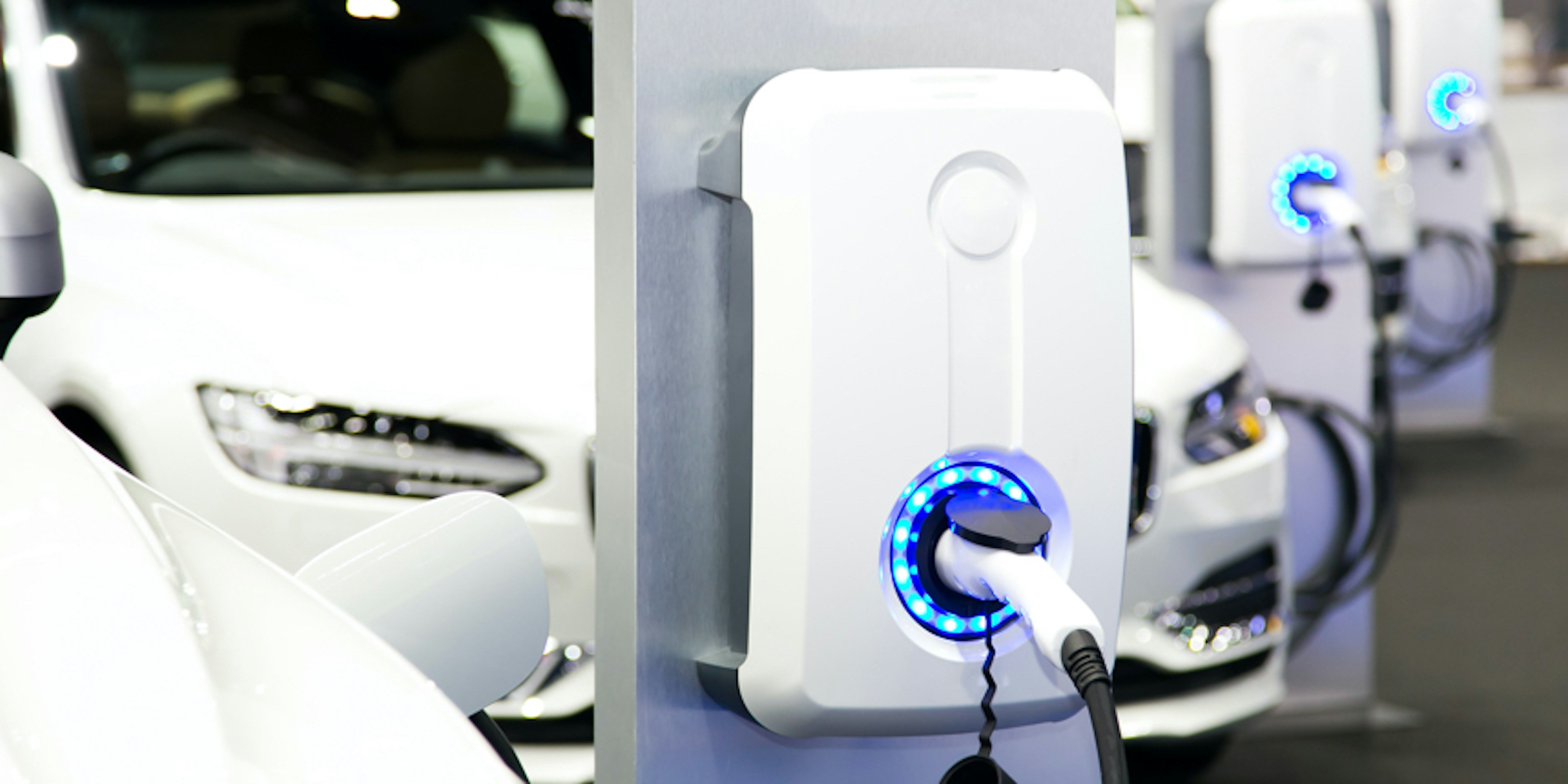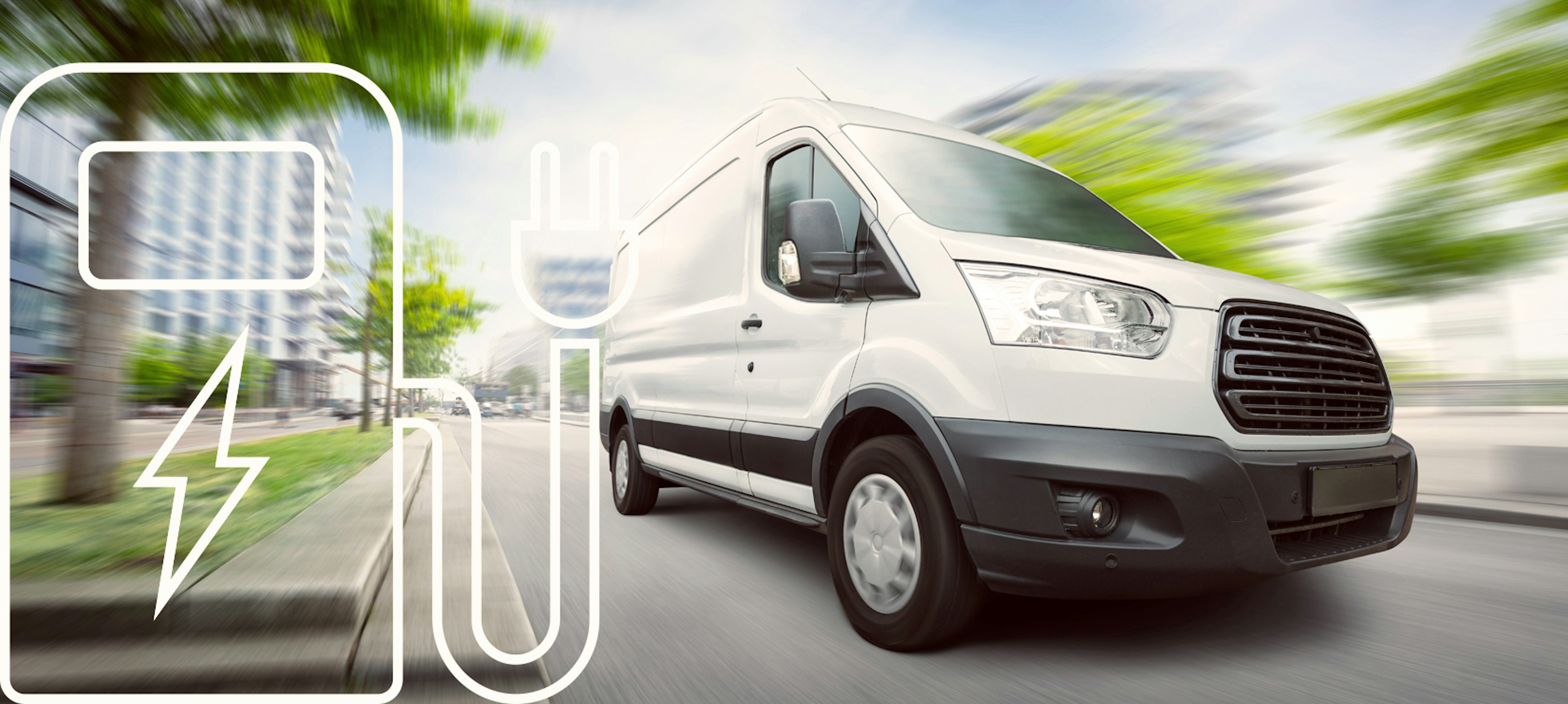A revolution is coming. Right now, less than 1% of fleet vehicles are electric, but that’s going to change in the next 10 years, especially as large fleets are expected to be electrified in response to the EV 100 initiative.
In a decade, 12% of fleet vehicles will be plug-ins. That’s a rise from the current estimate of 2 million electric fleet vehicles to more than 70 million in 2030.
It’s becoming increasingly apparent that adding EVs to your fleet — or even transitioning into a full EV fleet — is an inevitable reality. Keep in mind: this isn’t just an upgrade to GPS or an auto start. Rather, this will be a massive shift from typical combustion vehicles that have been the only type of vehicle on the market since Ford rolled out their Model A more than 100 years ago. The shift to EV will mean monumental changes to how we manage fleets, and learn the new technology to support them.
That’s why we’re breaking down everything you need to know to its core: first starting with some basic EV terminology:
The Need-to-know Jargon for EV fleets
For those who have been dealing with regular old diesel cars their entire life, it’s hard to get a grasp on all the new EV lingo. We broke it down into the basics you’ll want to know to get started.
Charging
AC - Stands for alternate current, or current that regular changes direction.
- AC Level 1 - Can be charged with an ordinary household outlet. Gets 4.5 miles of range per hour of charging, or about 22 hours for a full charge.
- AC Level 2 - Can be charged with an outlet that an electric dryer or oven uses. Gets around 26 miles of range per hour of charging.
DC - Stands for direct current, a type of charging that flows in one direction.
- DC Fast - Uses a pricier outlet that requires more power than a house (and costs $10-40,000); gets 40 miles of range for every 10 minutes of charging.
- Tesla supercharger - An ulta-fast and powerful DC charging system that are only available to Teslas.
Vehicle Types
- ICE - Stands for Internal Combustion Engine which is powered by combustible fuel — this is what most vehicles are powered by today.
- BEV - Stands for Battery Electric vehicle, and is an all-electric vehicle that uses energy stored in rechargeable battery packs.
- HEV - Stands for Hybrid Electric Vehicles, a system that combines the EV system and an ICE system.
- PHEV - Stands for Plug-in Hybrid Electric Vehicles, which contain batteries that can be charged with an electric power source.
Miscellaneous
- Range anxiety - The stress a driver feels about not being able to reach a charging station before their vehicle runs out of charge.
- Off peak charging - Charging your vehicle at off-peak hours when prices are typically lower.
Now that you have the basics under your belt, it’s time to start your (electric) engines and take the first steps to prepare to add EVs.
What can fleet managers do to prepare to add EVs to their fleet?
Establish EV procurement goals.
Any good project begins with a clear goal. Keep tabs on which municipal fleets in your community and surrounding communities are going electric, and then establish goals for yourself. Set a target — say that you’re committed to having X amount of EVs by 2030. That’s enticing to customers, who increasingly say they prefer brands to be more environmentally friendly and ethical.
Understand your local tax benefits.
One of the benefits of an EV fleet is that you’ll see costs decrease tremendously in certain areas. EV tax credits are one of these areas, and the benefits add up quickly. Currently, EV tax credits that are available for 2023 tax returns is up to $7,500 per EV purchased in the U.S. And many state and local governments offer tax credits as well (you can search for your area here). For an entire EV fleet, this could add up to mass amounts in savings over time.
Research the tech you may need to train your drivers on.
Range anxiety is a valid reason to be weary of adding EVs to your fleet, but tech today can help ease a lot of that anxiety. Find charging stations instantly on apps like PlugShare, EVgo, Electrify America, Chargeway, even Google Maps, which allow you to search for “EV charging stations near me.” To pay for the charging, you can usually use an app like ChargePoint or EVgo. Not only can the apps estimate the cost of a full charge, but they can predict how many miles you’ll be able to go on that charge. EV charging locations are often at convenient places like Walgreens and Kroger. There are also an increasing amount of public charging stations at shopping malls, universities, and more.
What’s on the market for EV fleets?
Current market trends
The price of electric vehicles is falling, which is good news for wide consumer adoption — currently, more than 70 percent of electric car customers are high-earning, with incomes of at least 100K. But EV prices dropped from an average of $64,300 to $55,600 last year, a 13.4% decline. Here are some of the most popular EVs that are on the market now:

On the market in the near future
Between 2020 and 2030, major car manufacturers have big plans for EVs. Toyota announced plans to generate half of its sales from electrified vehicles by 2025, five years earlier than it previously estimated. Volkswagen aims for EVs to make up 40% of its global fleet by 2030. Cadillac's president said the majority of the brand's models would be electric by 2030, and Volvo pledges to be an electric-only vehicle manufactuer by the year 2030.
Challenges fleet managers face with EV adoption
Lack of charging station infrastructure
While there are 130,000 public charging stations for electric cars in the country in 2023 — there will be an estimated 15 million plug-in EVs on the road in 2030, 15 times the current amount. Luckily, experts predict to see more and more public charging stations around the U.S. between now and 2024.
Location-specific weather issues
Extreme weather doesn’t bode well for most EVs. Research from AAA showed that when temperatures were at 20°F and heat was on, the driving range decreased by 41 percent. And when temperatures were as high as 91°F and air conditioning was on, the driving range was reduced by 17 percent. This may be part of why EVs are so popular in parts of California with mild weather, but may cause range anxiety for those living in the unpredictable weather of the midwest. To maintain battery life, EV drivers should try to keep their speed under 60 mph and avoid lengthy trips in rural areas when weather is severe.
Inflation-based issues
The cost of EV battery replacements have soared in 2022 from inflation. Due to this, cost of repair, cost of charging and other expenses have made it harder to maintain an EV fleet.
Few EV trucks and EV vans on the market currently
Many fleets rely on trucks and vans, and at this moment in time, there aren’t a ton of options for larger EVs. But, Rivian, has released an electric truck in 2021 to suit the need for larger EVs. Other companies, such as Lightning Systems, specialize in fleet electrification. Customers can buy fully electric vehicles that the company has actually converted from ICE to electric.
Types of fleets best positioned to add EVs
Transportation as a Service fleets
As vehicle ownership slowly decreases, Transportation as a Service is expected to grow in the coming years, meaning fleet managers may want to start reshaping their role into mobility managers. But even more interesting is that EVs are expected to dominate these shared mobility services. EVs currently account for 1.8% of the shared mobility fleet, but this is predicted to rise steeply to 80% by 2040.
Local delivery service fleets
While EVs may not be widely adopted by long-haul delivery services in the next couple years, they have a tremendous opportunity to dominate last-mile deliveries. For fleets that work with local businesses that deliver, the drastically reduced maintenance and fuel costs of an EV fleet may be a game changer for bottom lines.
Maybe you’re ready to get into the nitty gritty of deciding where EVs fit in your fleet. Maybe you’d rather build out a procurement plan for the next few years. Either way, we’re here to help guide your every step. Let’s start planning your fleet’s future. Tell us more about your needs and we’ll get you fixed up with an expert.
Skills covered in the class
Data-Driven Decision Making
Mobility-Mindset
Fleet Electrification
Brand Image
Did you enjoy this class?
Share it with your organization and colleagues.
Sign up for our newsletter for the latest information about the fleet industry.
Sign up for our newsletter for the latest information about the fleet industry.



